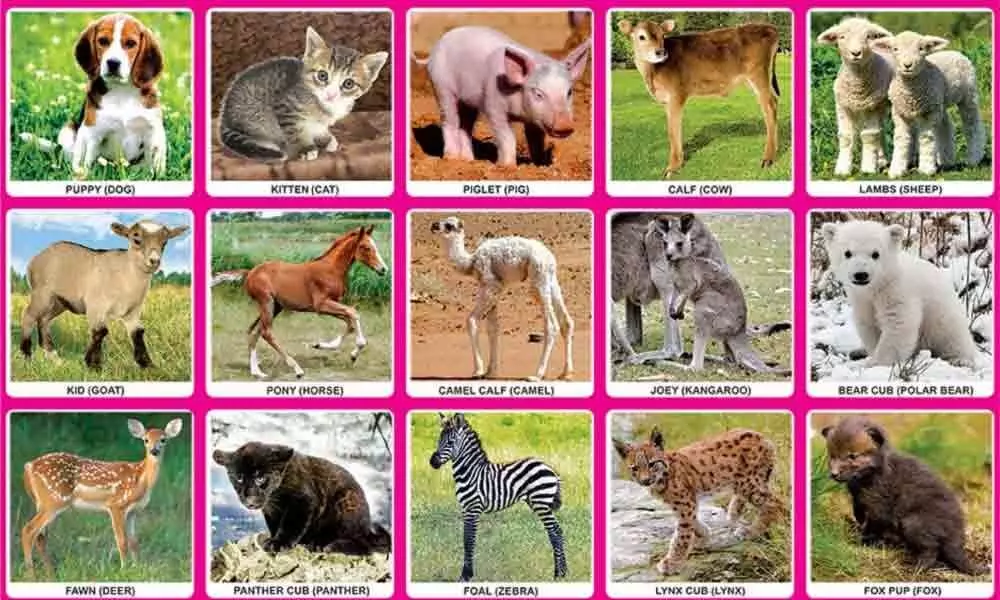Introducing children to the wonders of science

Science introduces your child to the fascinating world of plants, animals, and the environment around them. Understanding science becomes easier when it is intriguing.
Science introduces your child to the fascinating world of plants, animals, and the environment around them. Understanding science becomes easier when it is intriguing. So how can you make it intriguing? Through a science quiz for kids to trigger their curiosity. Question and answers for kids to make the subject a fun to learn.
1. Which animal lays eggs?
a. Dog b. Cat c. Duck d. Sheep
Answer: Duck
2. A male cow is called…
a. Ox b. Dog c. Sheep d. Monkey
Answer: Ox
3. All animals need food, air, and ____ to survive.
a. House b. Water c. Chocolate
d. Fruits
Answer: Water
4. Which one is a fur-bearing animal?
a. Hen b. Crocodile c. Tortoise d. Cat
Answer: Cat
5. What is earth's only natural satellite?
a. Sun b. Mars c. Venus d. Moon
Answer: Moon
6. The tree has a branch filled with green _____.
a. Hair b. Root c. Leaves d. Trunk
Answer: Leaves
7. What part of the body helps you move?
a. Eyes b. Lungs c. Pancreas d. Muscles
Answer: Muscles
8. The two holes of the nose are called?
a. Eyelids b. Nostrils c. Nails
d. Hair
Answer: Nostrils
9. Which star shines in the day and provides light?
a. Moon b. Venus c. Mars d. Sun
Answer: Sun
10. Legs have feet and arms have ___.
a. Ankles b. Pelvis c. Hands d. Skull
Answer: Hands
11. Which organ covers the entire body and protects it?
a. Liver b. Heart c. Skin d. Brain
Answer: Skin
12. Which shape is a round?
a. Rectangle b. Circle c. Square
d. Triangle
Answer: Circle
13. Who invented the first functional telephone?
a. Albert Einstein b. Nikola Tesla
c. Thomas Alva Edison
d. Alexander Graham Bell
Answer: Alexander Graham Bell
14. What is the young one of a cow called?
a. Puppy
b. Kitten
c. Calf
d. Baby
Answer: Calf
15. Dark rain clouds can give out lightning and ____.
a. Thunder b. Snow c. Sunlight d. Wind
Answer: Thunder
16. Your hands have four fingers and a ____.
a. Knee b. Ankle c. Elbow d. Thumb
Answer: Thumb
17. Which part of the bird lets it fly high in the sky?
a. Beak b. Feet c. Wings d. Claws
Answer: Wings
18. Animals that suckle their young ones are called ____.
a. Reptiles b. Birds c. Amphibians
d. Mammals
Answer: Mammals
19. What part of the plant conducts photosynthesis?
a. Branch b. Leaf c. Root
d. Trunk
Answer: Leaf
20. What is the boiling point of water?
a. 25°C b. 50°C c. 75°C d. 100°C
Answer: 100°C
21. Which is the largest land animal?
a. Lion b. Tiger c. Elephant d. Rhinoceros
Answer: Elephant
22. ____ helps pump blood through the entire body.
a. Lungs b. Kidneys
c. Heart d. Brain
Answer: Heart
23. How does a dog express happiness?
a. Twitching ears
b. Moving head
c. Closing eyes
d. Wagging tail
Answer: Wagging tail
24. What are the three states of matter?
Answer: Solid, Liquid, and Gas
25. Frog is a reptile or amphibian?
Answer: Amphibian
26. If one boils water it will convert into ____.
a. Mist b. Steam c. Clouds d. Snow
Answer: Steam
27. When you push something, you apply ____.
a. Force b. Acceleration
c. Mass d. Compression
Answer: Force
28. Which group of animals have scales?
a. Mammals b. Amphibians
c. Reptiles
Answer: Reptiles
29. Where does our food collect after we chew and swallow it?
a. Small intestine b. Large intestine
c. Stomach d. Liver
Answer: Stomach
30. Which material from the following has the highest transparency?
a. Paper b. Wood
c. Metal d. Glass
Answer: Glass
31. Which animal from the below list is best adapted to the desert?
a. Tiger b. Cheetah
c. Camel d. Deer
Answer: Camel
32. What part of the skeletal system protects the brain?
a. Spine b. Thigh
c. Pelvis d. Skull
Answer: Skull
33. What is the name of a frog's young one?
a. Infant b. Puppy
c. Calf d. Tadpole
Answer: Tadpole
34. Which pigment gives the leaves its green colour?
Answer: Chlorophyll
35. What tissue connects muscles to bones?
a. Skin
b. Blood vessels c. Fat d. Tendon
Answer: Tendon
36. Which nutrient plays an essential role in muscle-building?
a. Protein b. Carbohydrate
c. Iron d. Fat
Answer: Protein
37. Plants need which gas to perform photosynthesis?
a. Hydrogen b. Carbon monoxide
c. Carbon dioxide d. Oxygen
Answer: Carbon dioxide
38. Which scientist proposed the three laws of motion?
a. Isaac Newton b. Thomas Alva Edison
c. Albert Einstein d. Stephen Hawking
Answer: Isaac Newton
39. Earth is surrounded by layers of gases collectively called the _____.
a. Hydrosphere b. Stratosphere
c. Atmosphere d. Ozone layer
Answer: Atmosphere
40. Which system of the body controls the senses?
a. Circulatory system b. Digestive system
c. Nervous system d. Skeletal system
Answer: Nervous system
41. Which is the largest animal on earth?
a. Shark b. Elephant
c. Blue whale d. Giraffe
Answer: Blue whale
42. Similar body cells group together to form a ___.
a. Organ b. Tissue
c. Blood vessels d. Joints
Answer: Tissue
43. What energy emerges from motion?
a. Potential energy
b. Electrical energy
c. Kinetic energy
d. Gravitational energy
Answer: Kinetic energy
44. Which is the strongest sense in a dog?
a. Touch b. Hearing
c. Smell d. Taste
Answer: Smell
45. The Standard unit of measurement for energy is ____.
a. Newton b. Ampere
c. Watt d. Joule
Answer: Joule
46. Which biologist proposed the theory of evolution through natural selection?
a. Charles Darwin b. Stephen Hawking
c. Francesco Redi d. Alexander Fleming
Answer: Charles Darwin
47. What are animals, which eat both plants and animals, called?
a. Herbivores b. Insectivores
c. Carnivores d. Omnivores
Answer: Omnivores
48. The outward force, away from the centre, felt by an object in circular motion is ___.
a. Centripetal force b. Circular force
c. Centrifugal forces d. Elastic force
Answer: Centrifugal force
49. What type of energy eventually depletes?
a. Kinetic energy b. Non-renewable energy
c. Gravitational energy
d. Renewable energy
Answer: Non-renewable energy
50. A single piece of coiled DNA is called ____.
a. Nucleus b. Ribosome
c. Cytoplasm d. Chromosome
Answer: Chromosome
https://www.momjunction.com



















